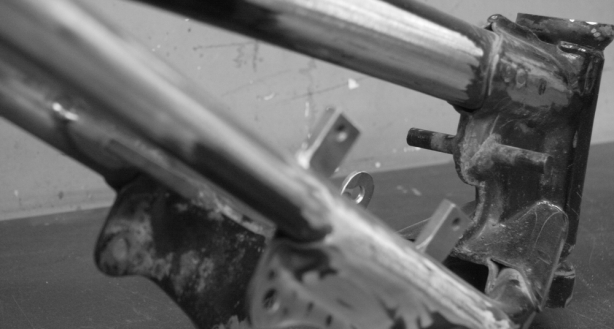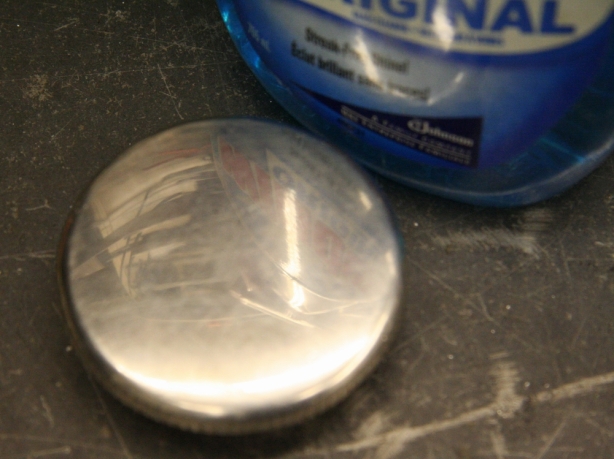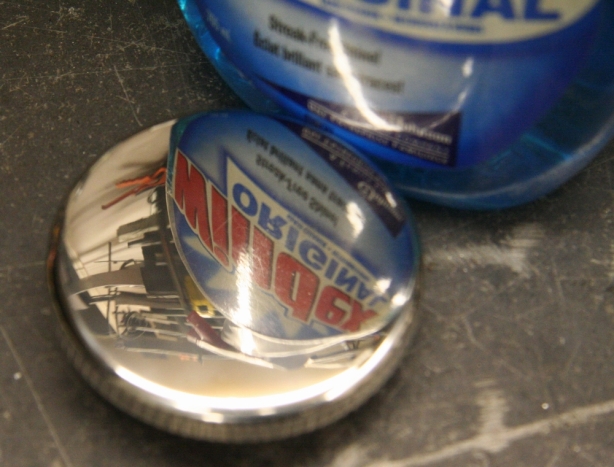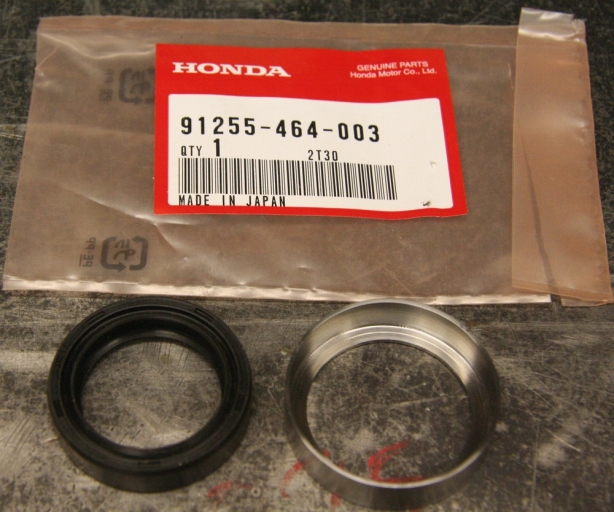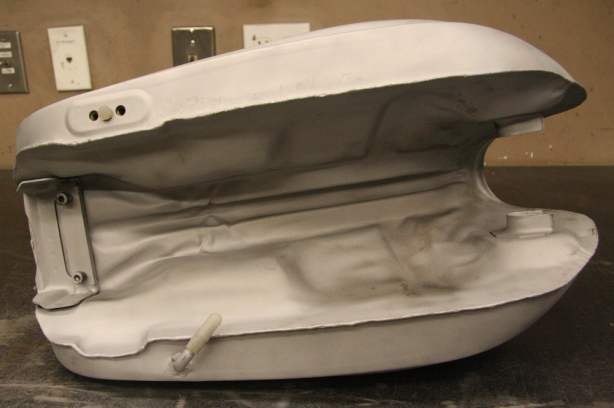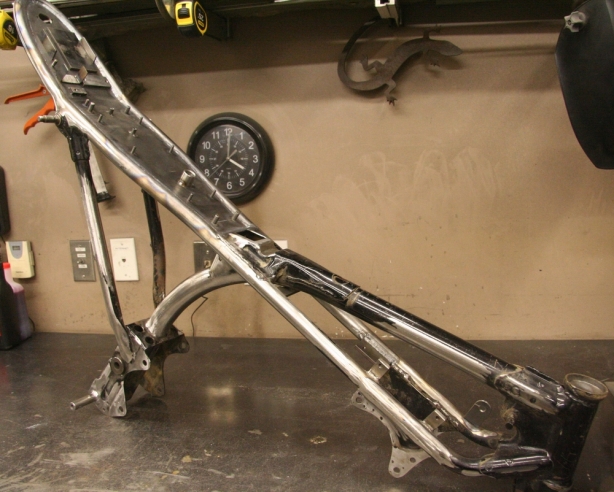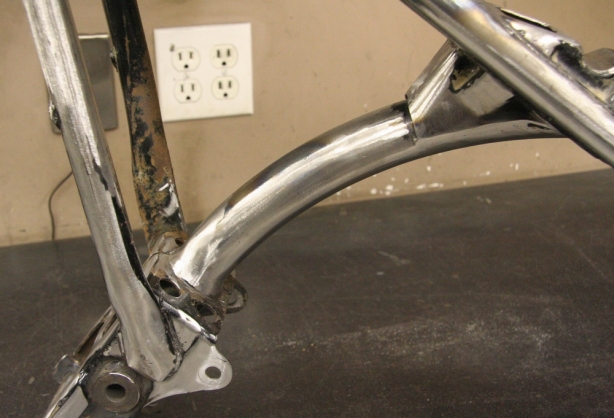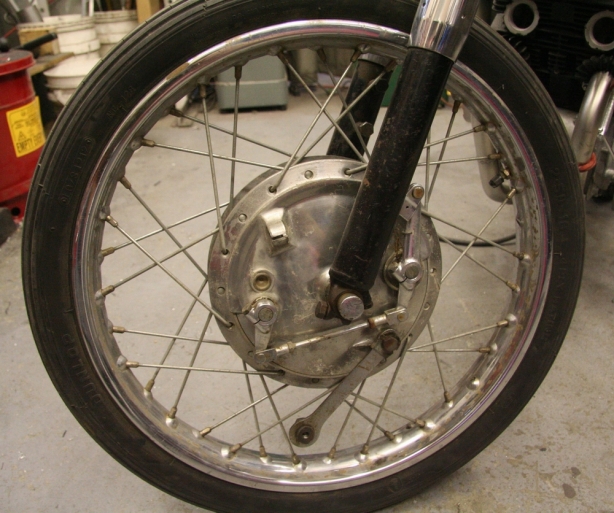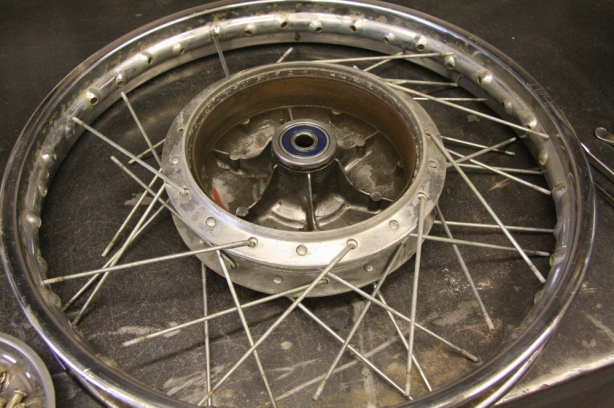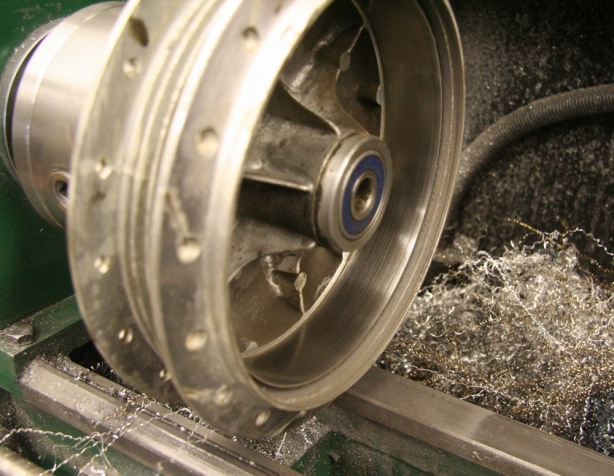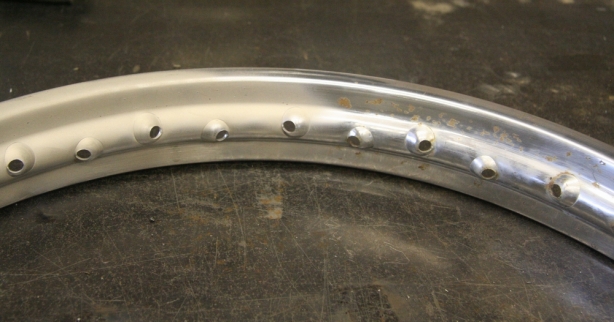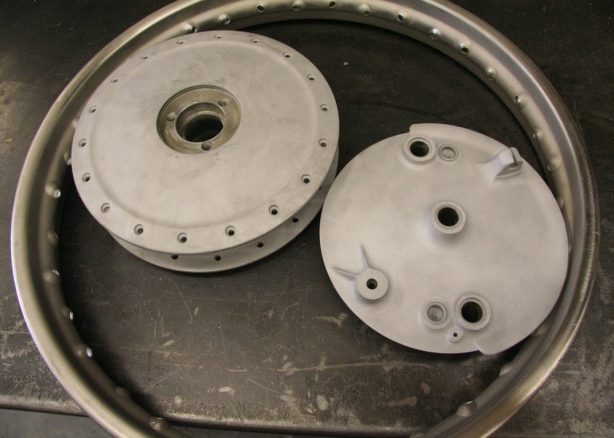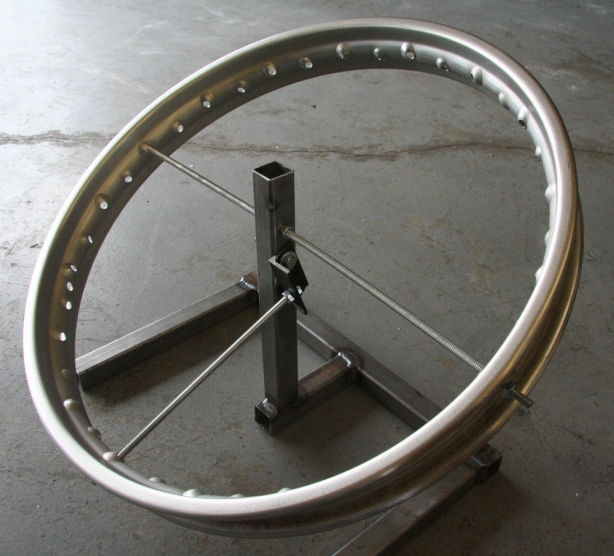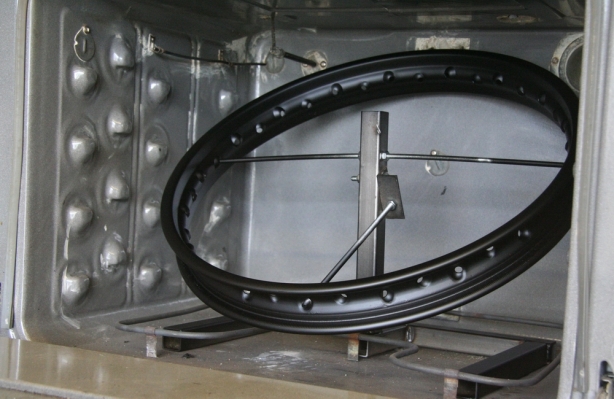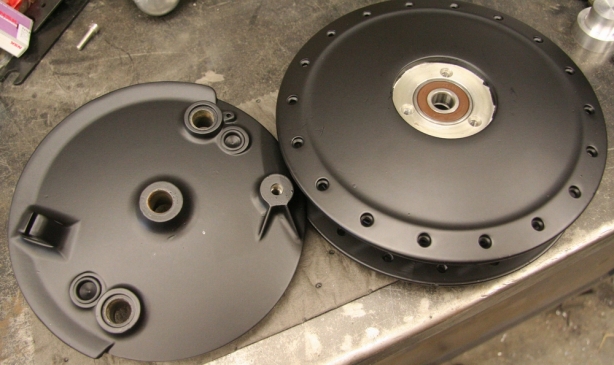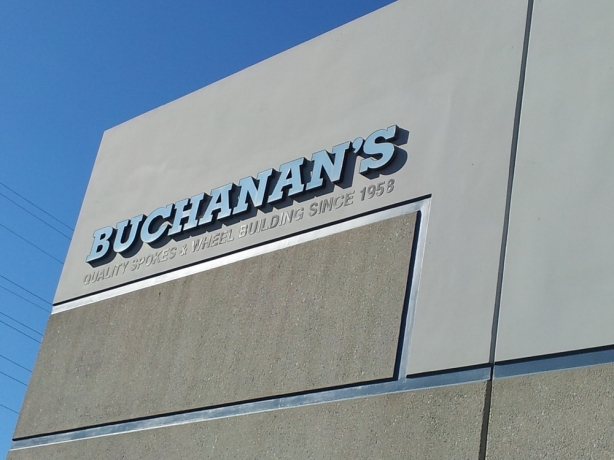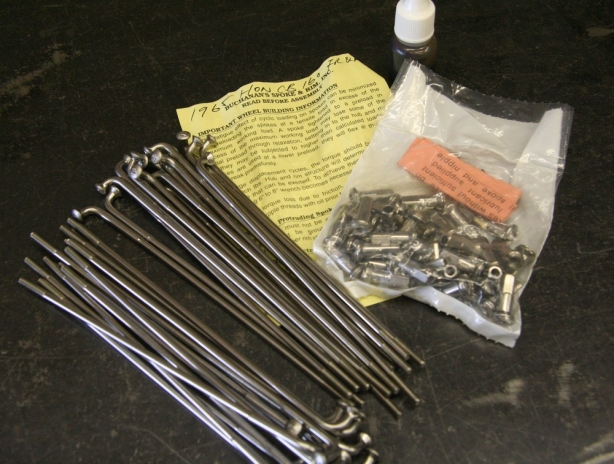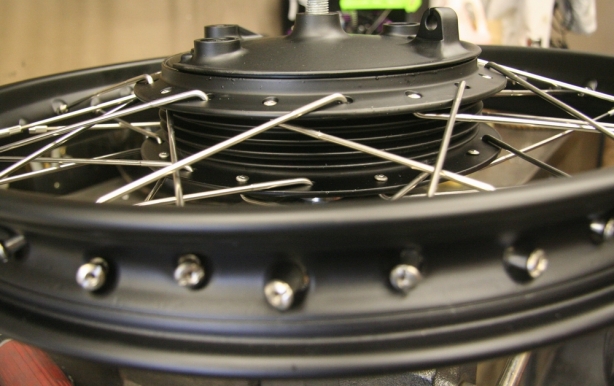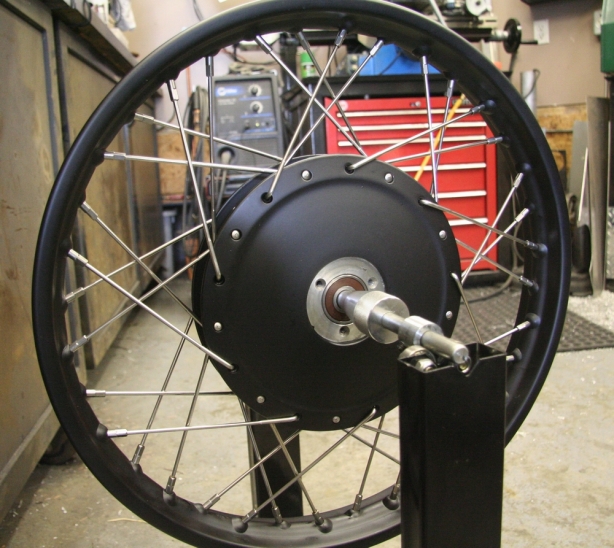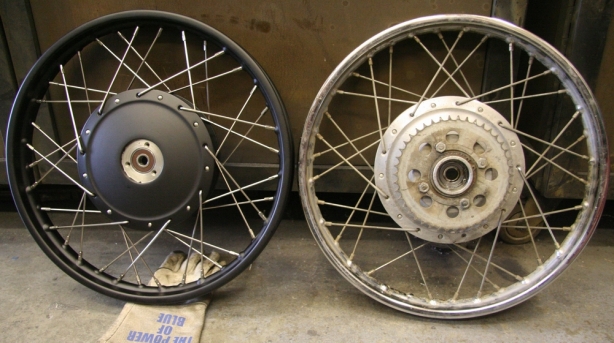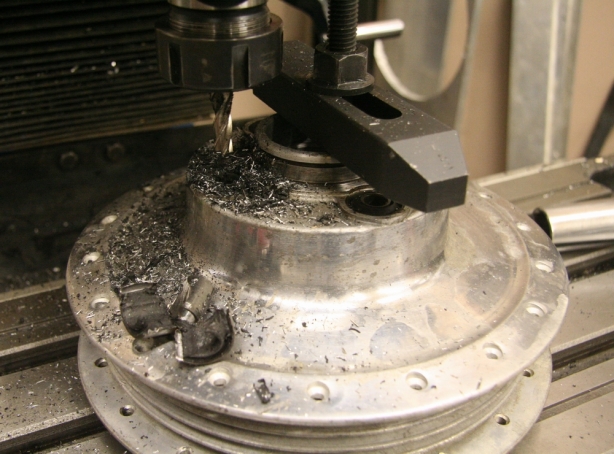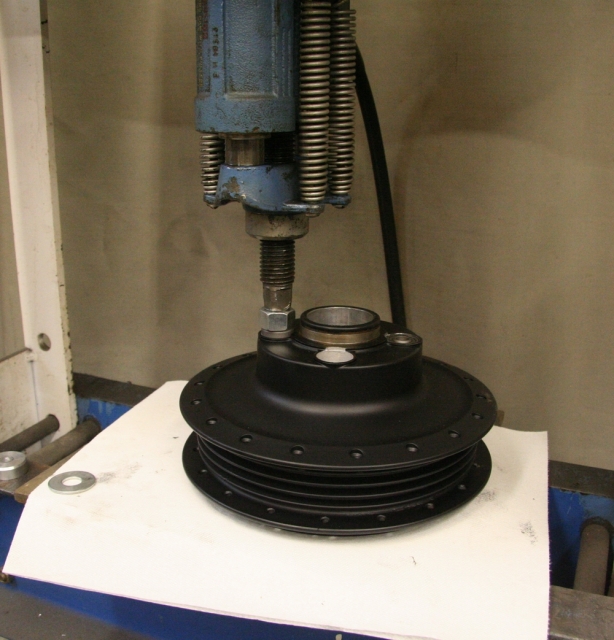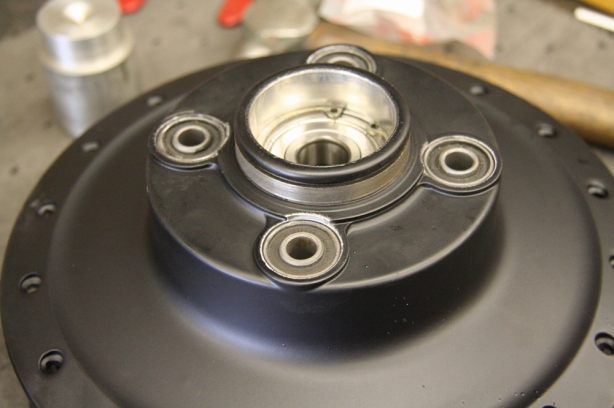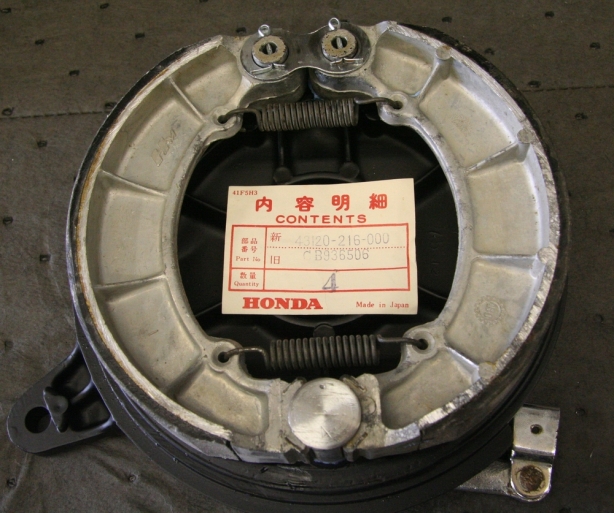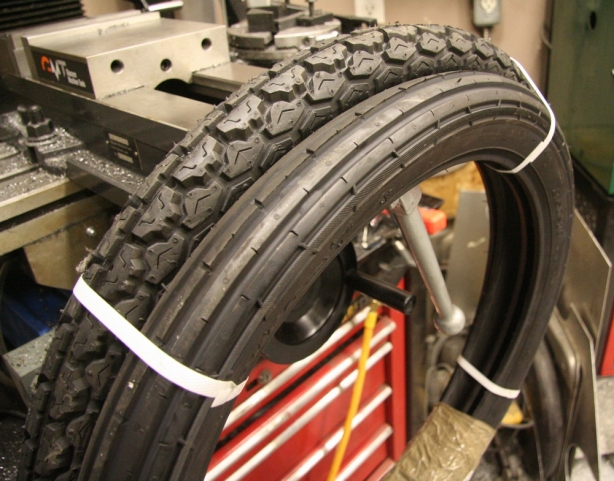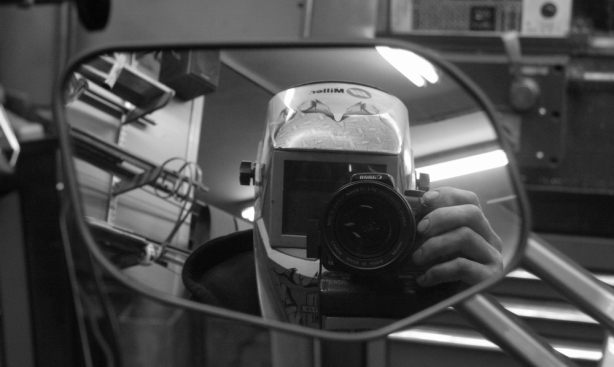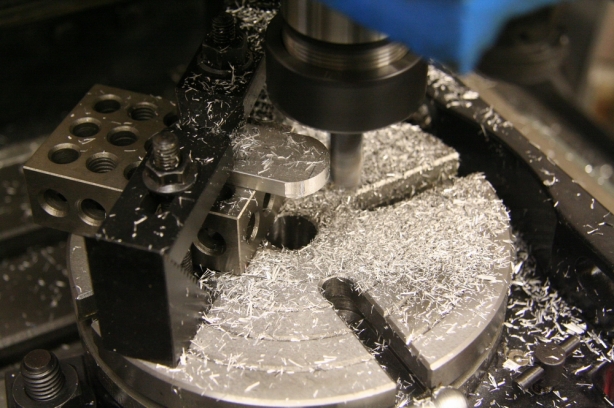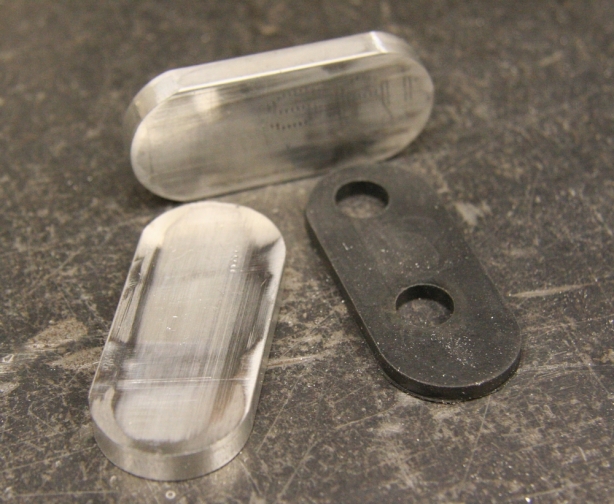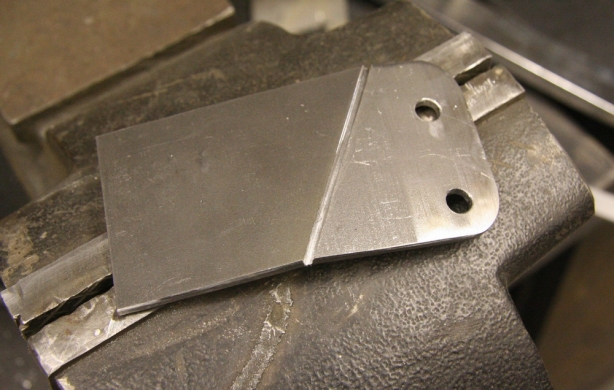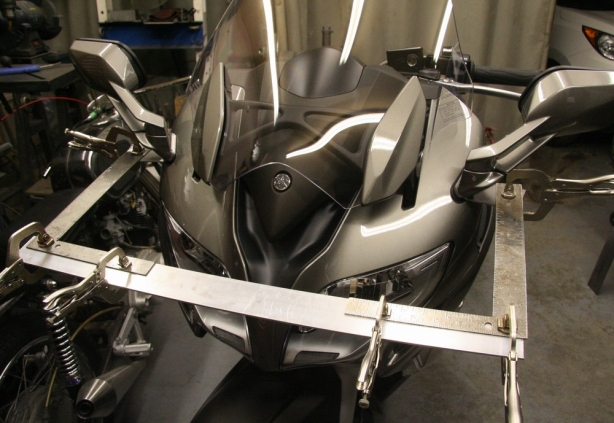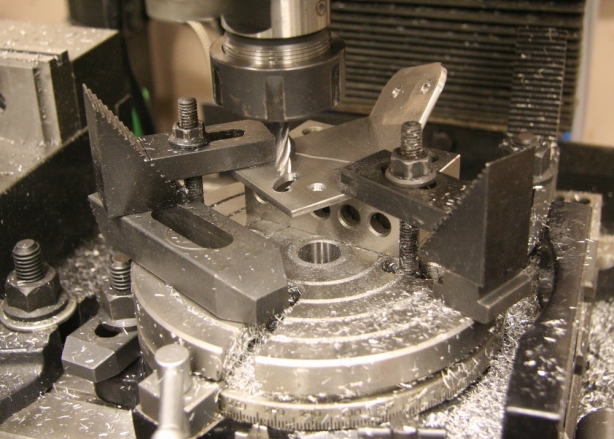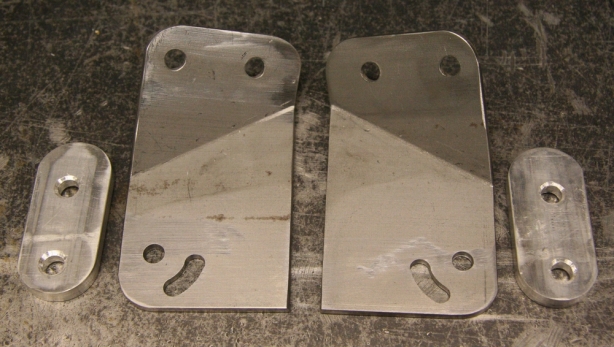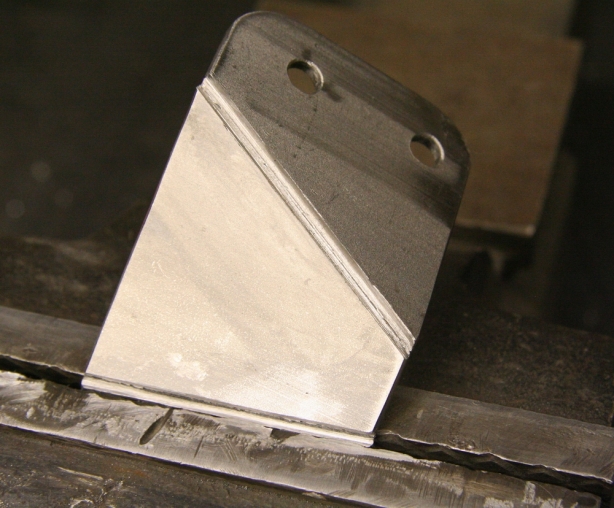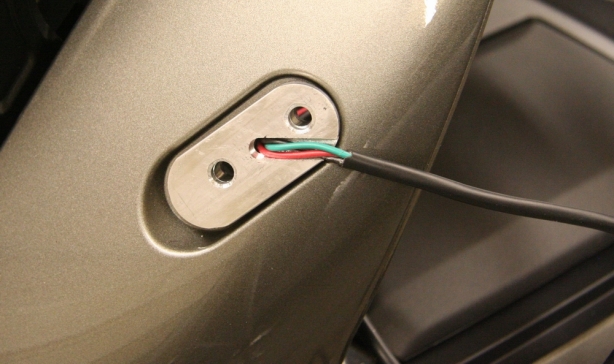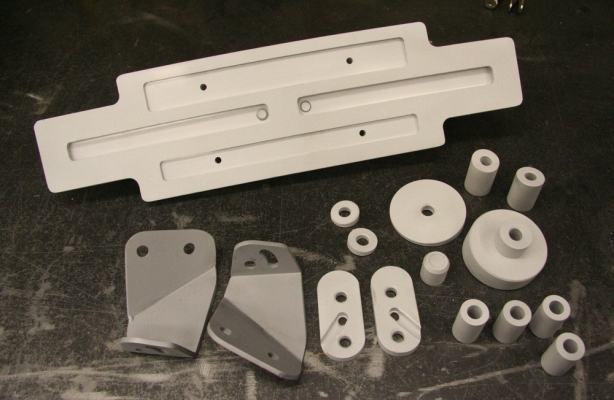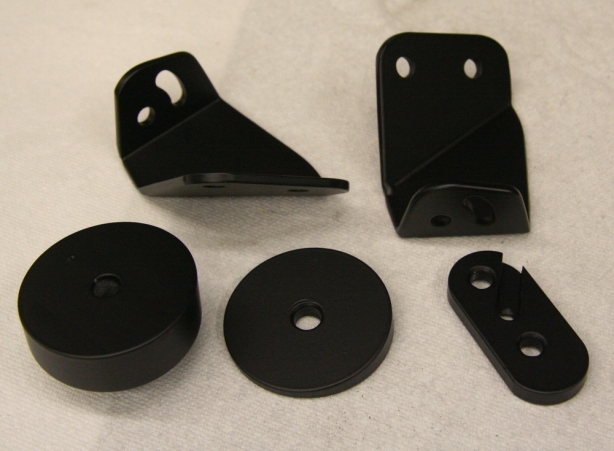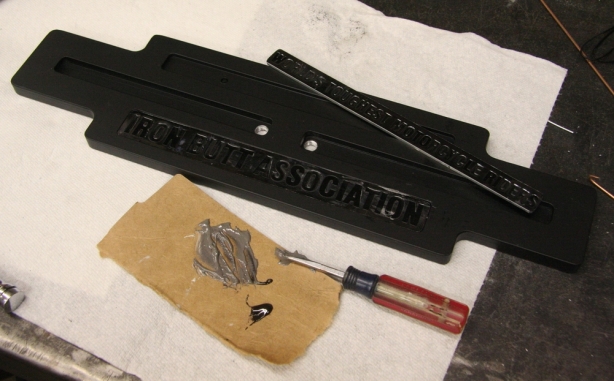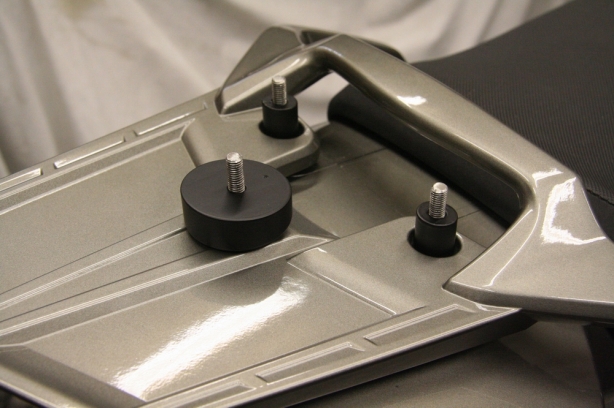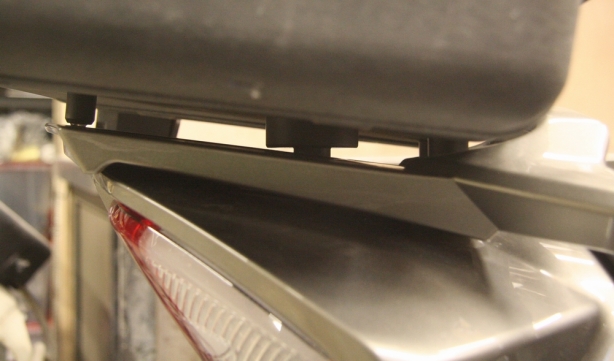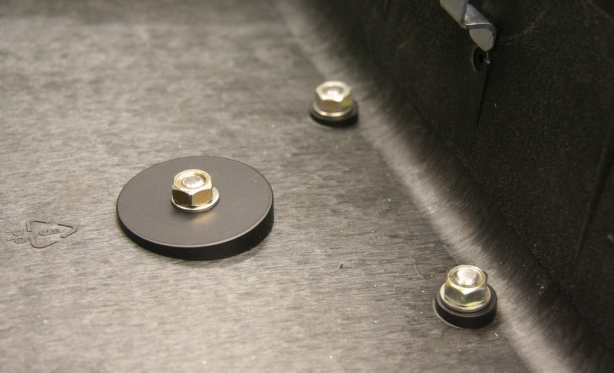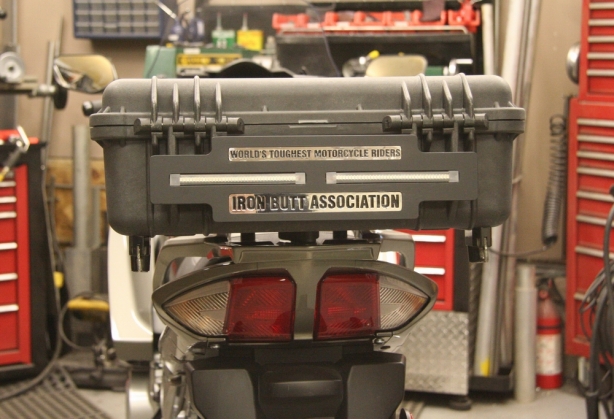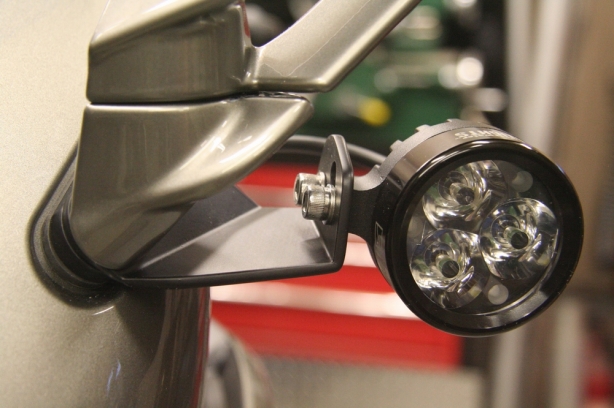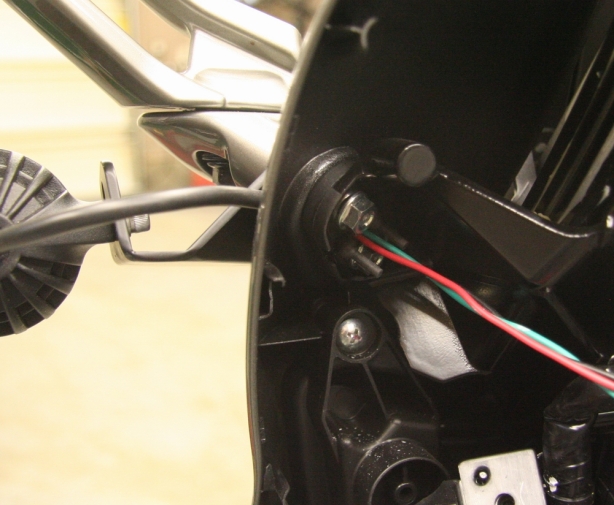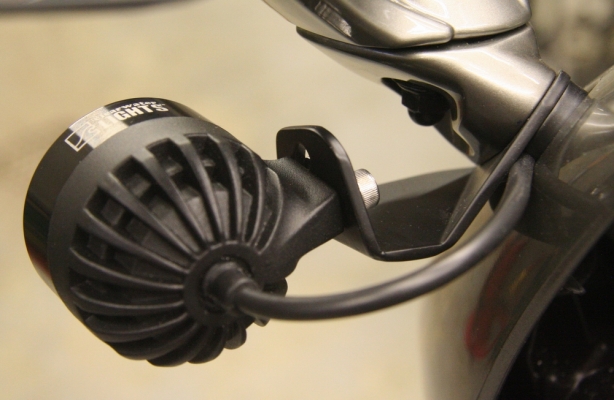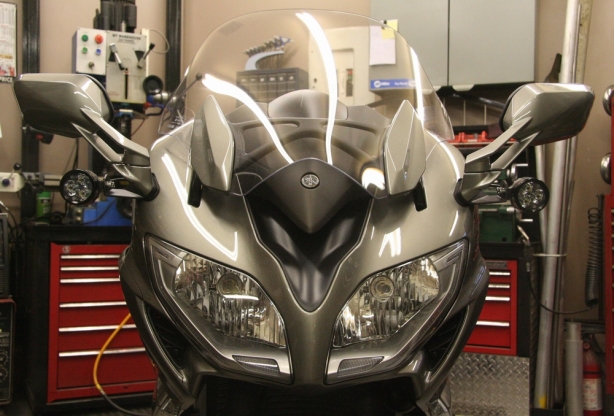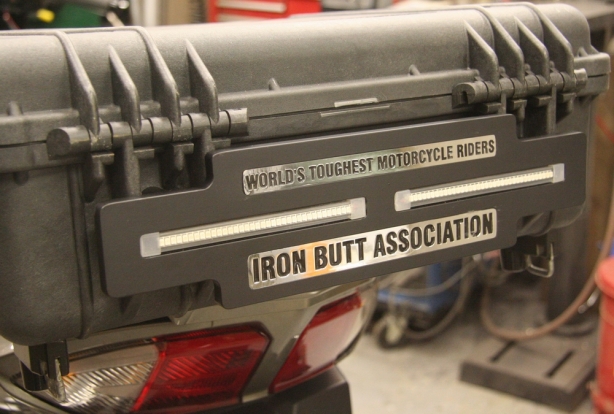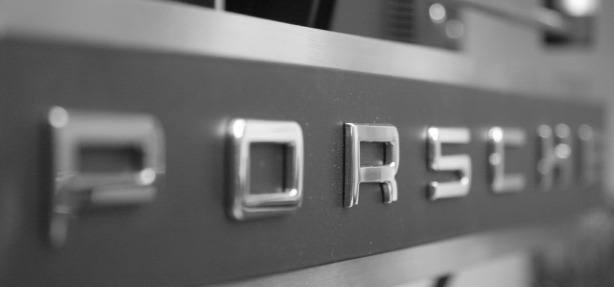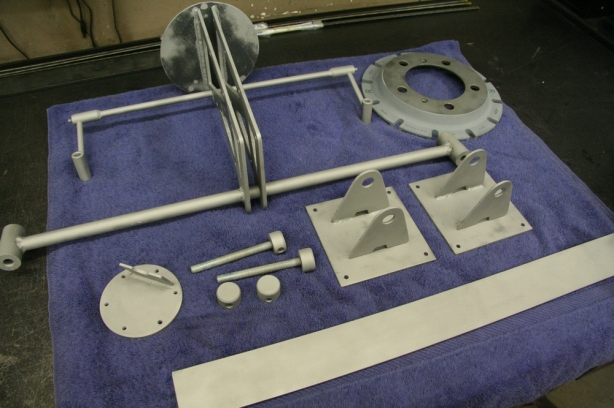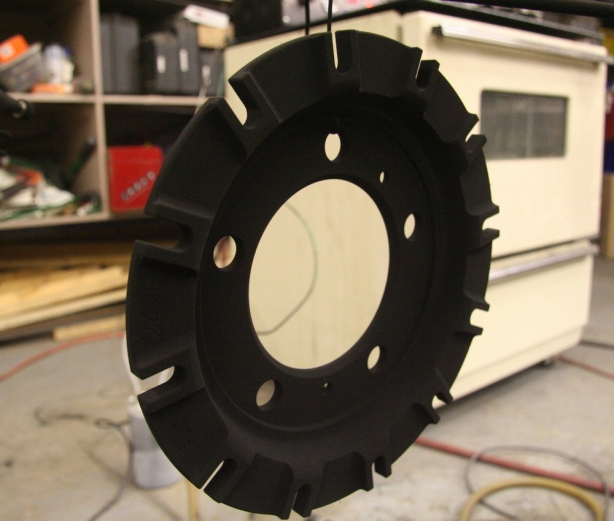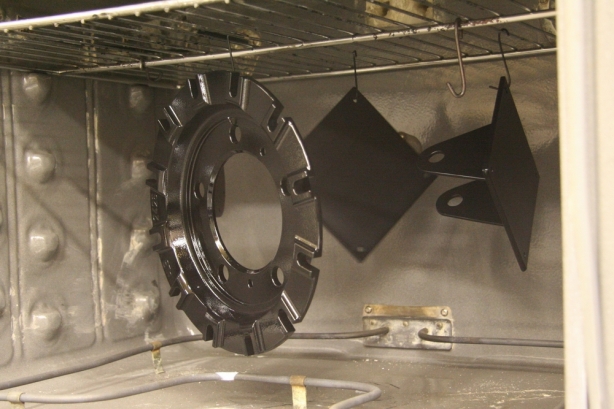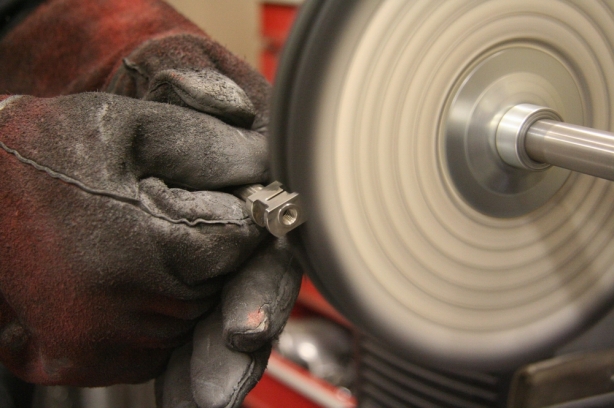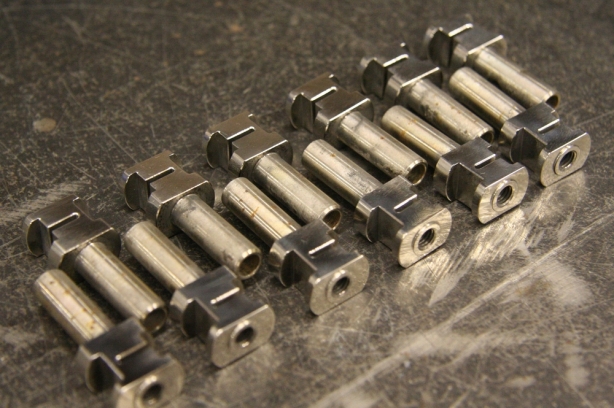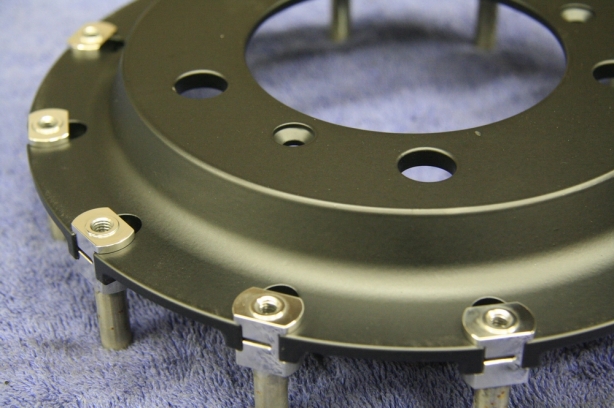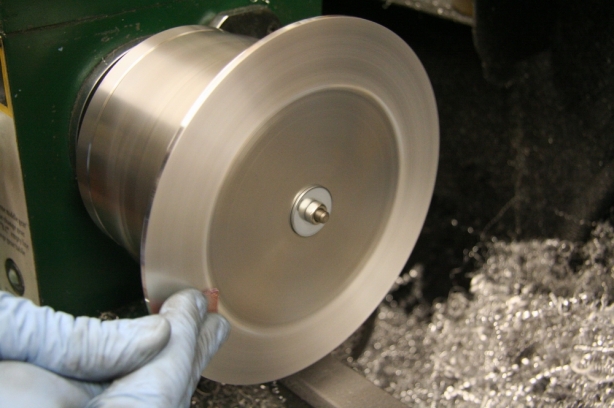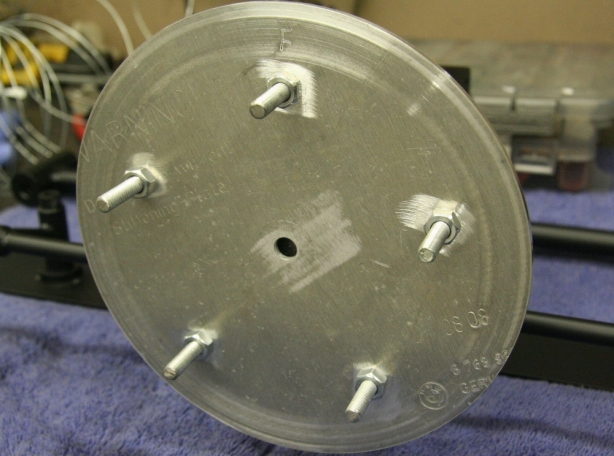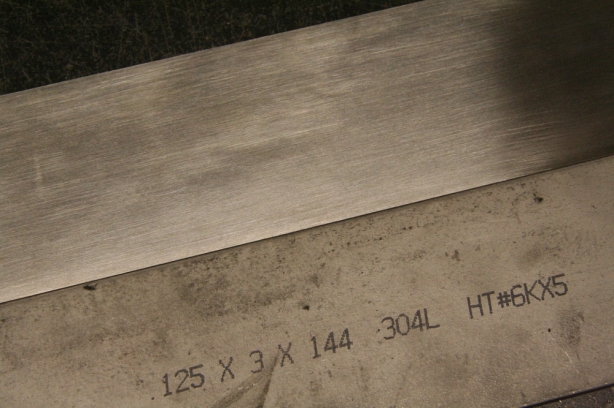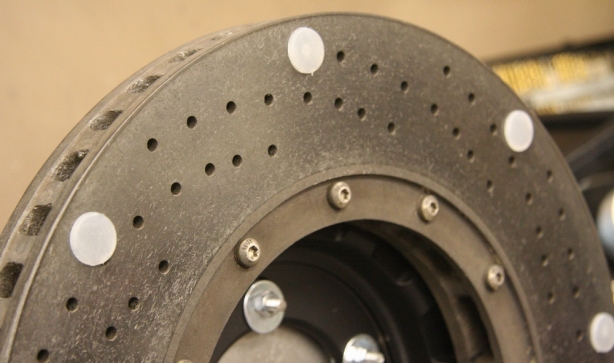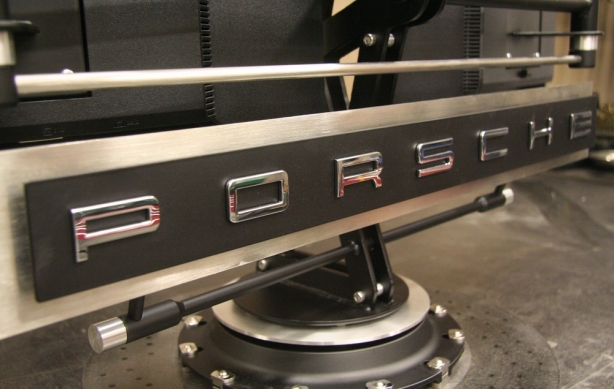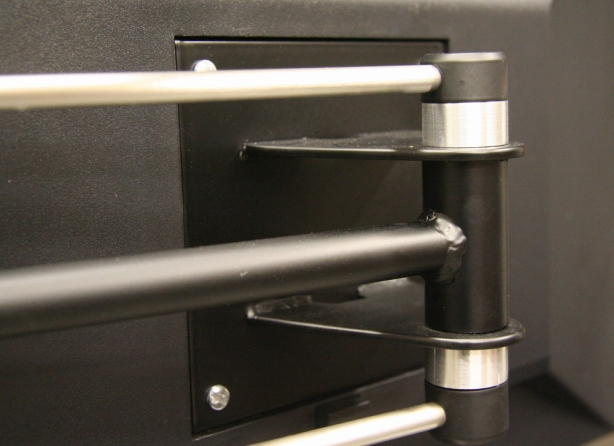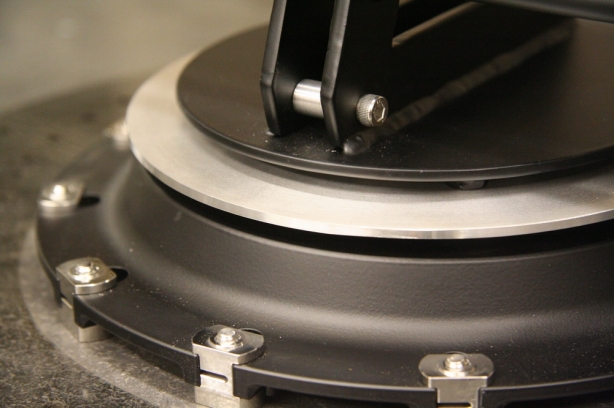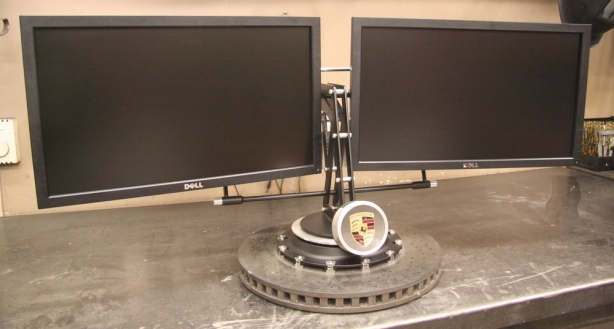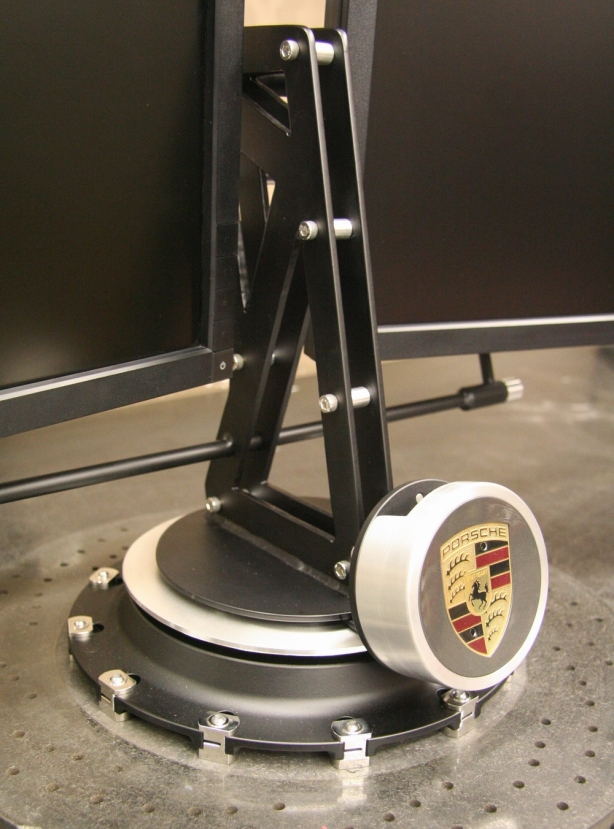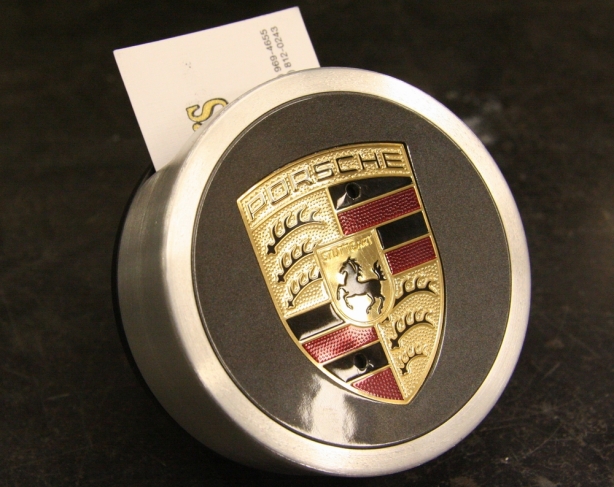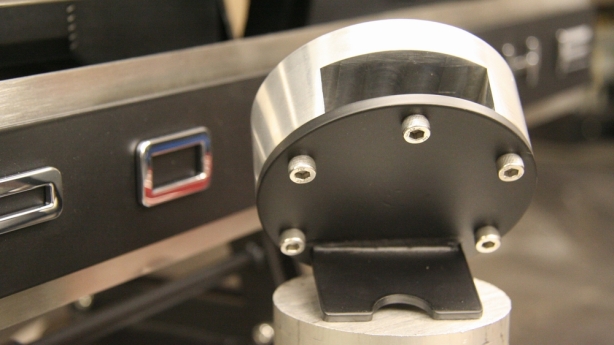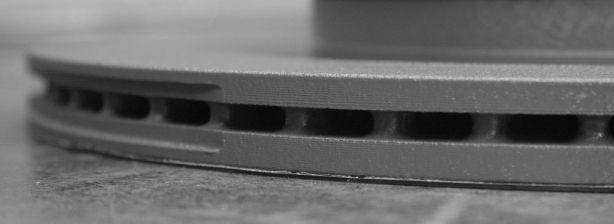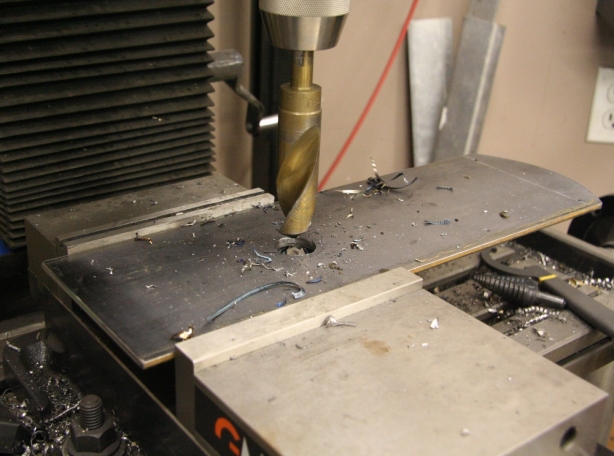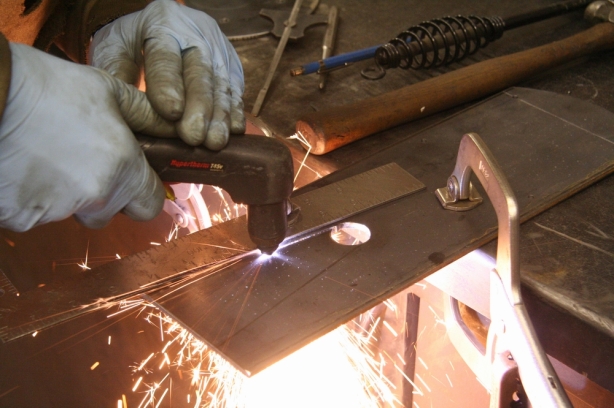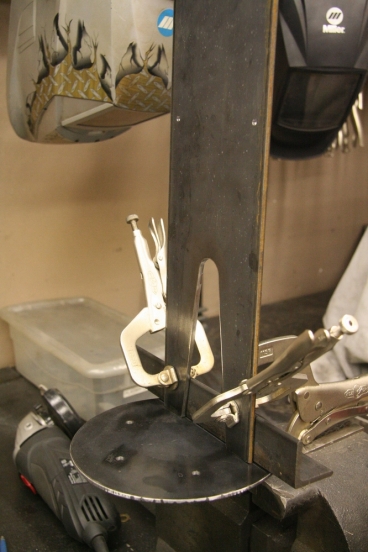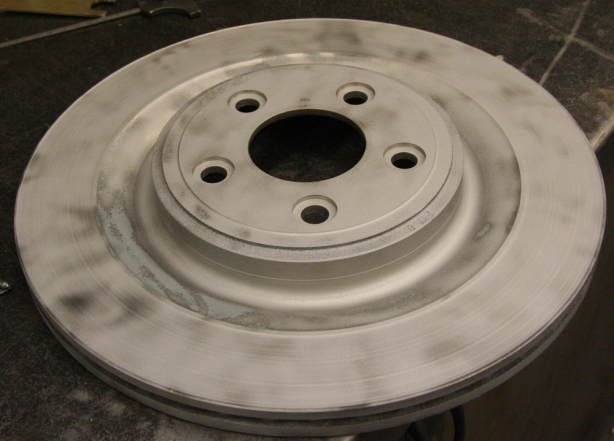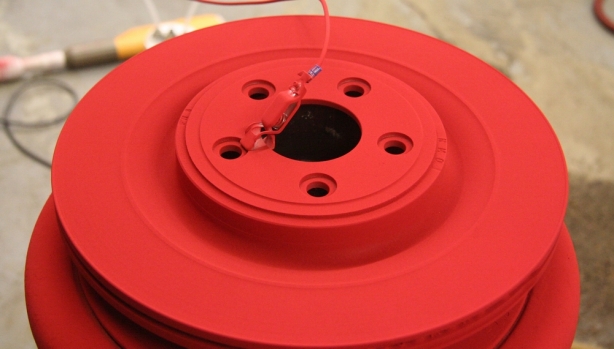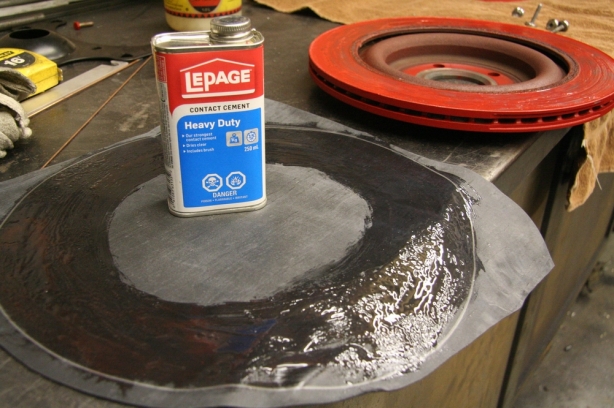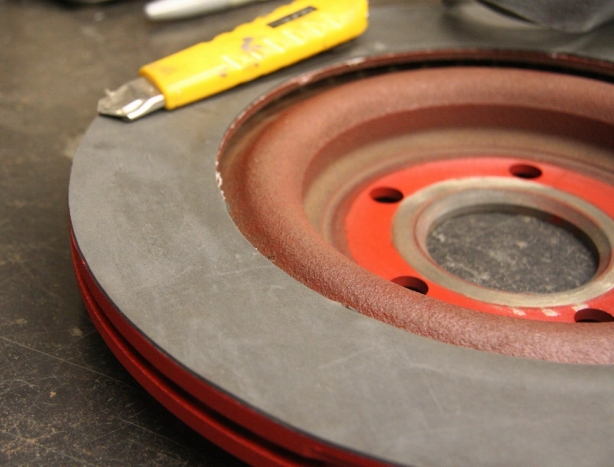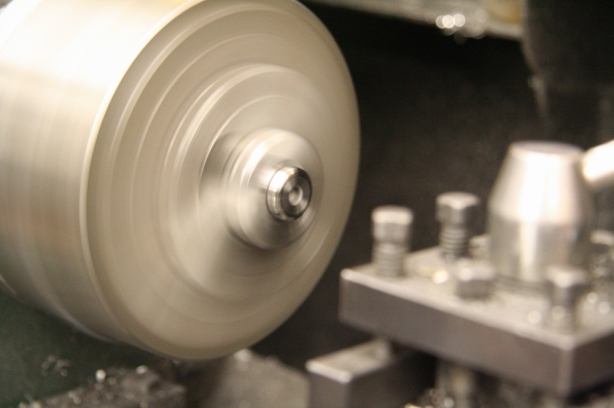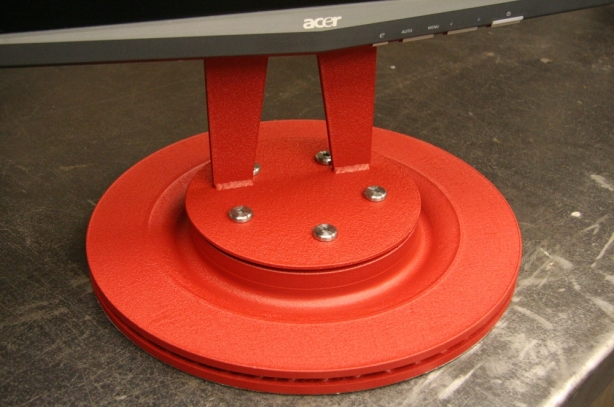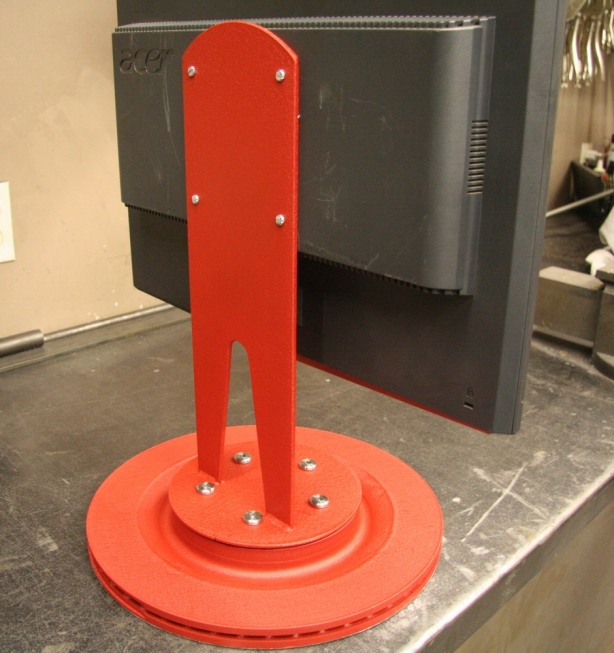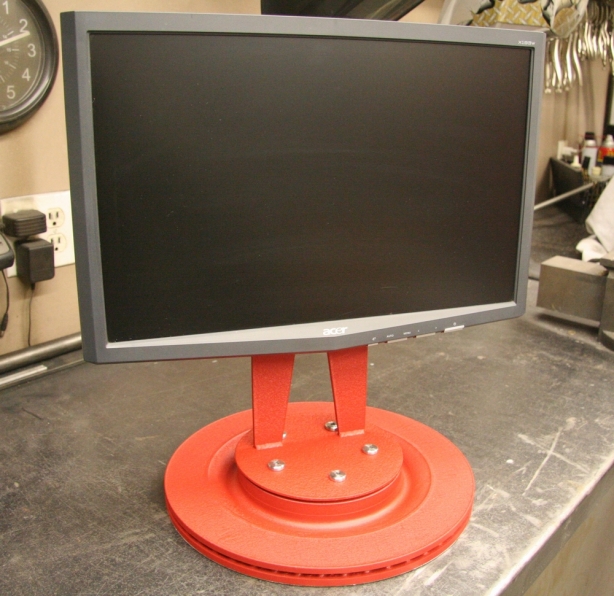I continue to struggle keeping up with the blog posts. The work in the garage has not slowed down however writing about it has. Work and family life is busy and something had to give. I was, however, able to find some time to put together a post outlining what has been going on lately.
The work on the CB160 Cafe Racer continues to take place. My goal is to have it completed by spring and therefore progress needs to continually take place. I think I will be in good shape to make my deadline however there is always more work involved then one may expect. No time to start slacking.
My plan from the beginning was to perform as much of the fabrication work as possible while the bike was still in one piece. Once I went as far as I could I would then strip the entire thing apart and start the refinishing, and rebuilding, process. Well this time has come; I have come to the point where all the finishing needs to take place therefore the bike has to come apart.
Although the following pictures leave out a lot of detail they will at least provide the highlights of what has been going on in the garage. So I invite you to scroll through the following pictures and bring yourself up to speed.
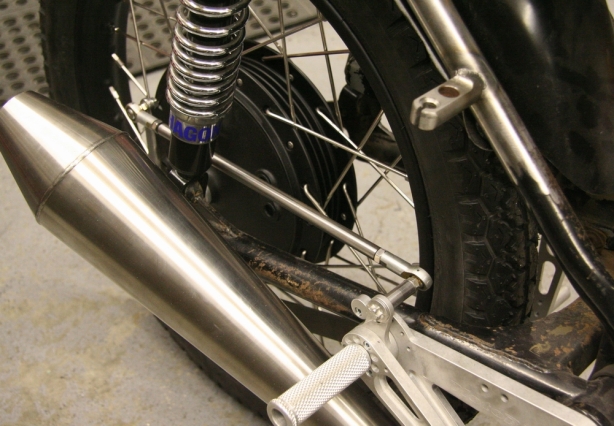
I am really going for the minimalistic look on the bike so stripping everything off that isn’t required is a priority. If I could get every cable off the bike I would however I have to stay realistic. I had already machined and tack welded a new rear brake cable support onto the frame (top right corner) however after rethinking things I decided to try for mechanical linkage for rear brake actuation. You can see my mocked up linkage from my rear sets to the rear drum. The pedal feel is much better and the linkage really cleans up the look. I will have to wait till the bike is at reassembly stage in order to figure out exact linkage length since chain adjustment will come into factor.
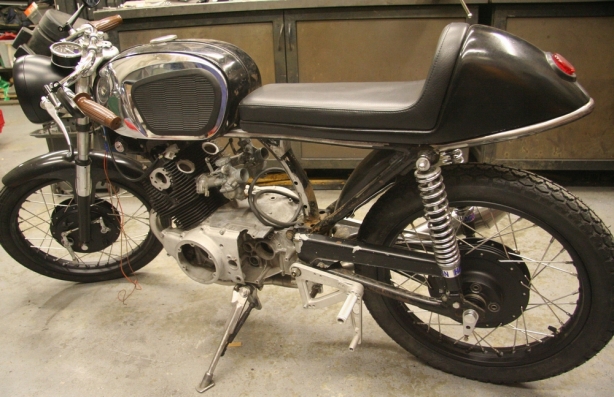
So here you have it. I think I have done as much fabricating as possible with the bike assembled. At this point the entire thing gets stripped down. Everything will then start to get prepped and refinished before reassembly will begin.
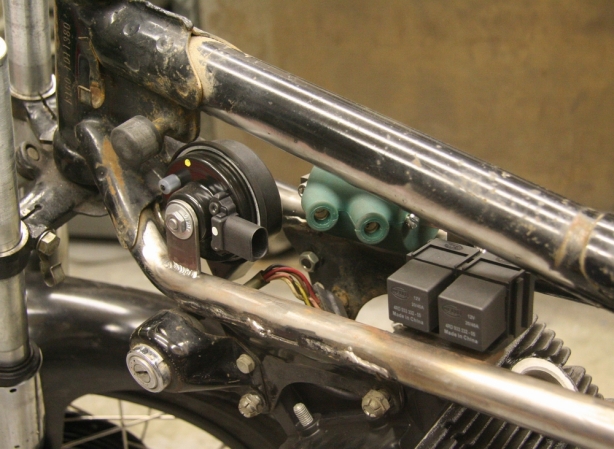
Something I never blogged about was the under tank electrical. The original horn and coil has been done away with and I added a new Dyna Coil with new mounting. The horn has been replaced with a high pitch one off a Porsche Cayenne and then I added a couple of relays to handle some of the new electrical.
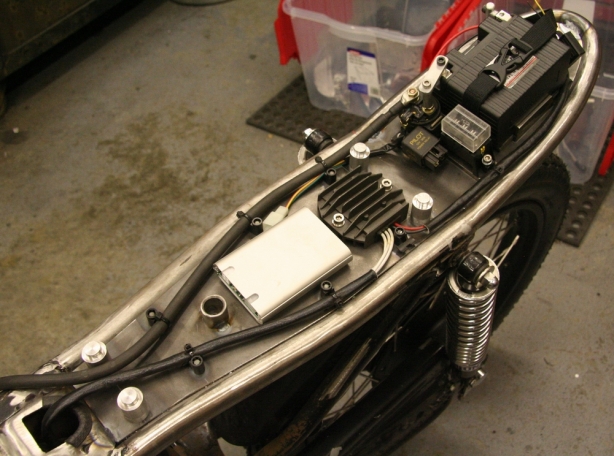
The central electronics have all been moved, and hidden, under the seat. Components include the electronic ignition module, charging system “regulator”, power supply relay, fuse block, starter solenoid, and battery.
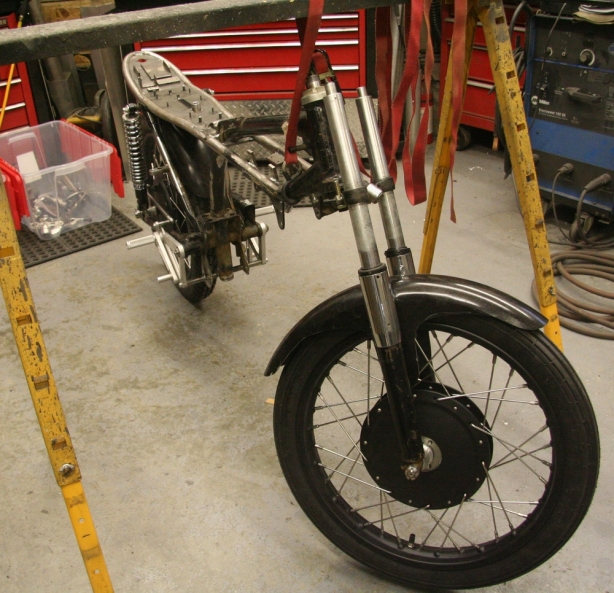
Time to start tearing things apart. Strapping the bike to a saw horse provided enough stability in order to get the wheels and suspension off.

So here it is, the bare frame. Not a single nut, bolt, or clip is left on it. Time to start laying down some final welds and clean up some existing ones.

All removed components were separated into indivduals bins to help keep things organized. A bin for powder coating, a bin for chroming, an electrical bin, and then a misc. bin.

I am not a huge fan of lots of chrome however since one of the distinctive features of the bike include the factory chrome tank covers I felt it was necessary to bring some chrome highlights into the bike. I chose some hardware, brake linkages, axles, and fork seal housings to join the tank covers in their display of bling. I had a local electroplating company strip the old chrome first. I then performed some touch up on all the parts and sanded out any rough casting marks. Once prepped the components were sent back to the electroplaters.
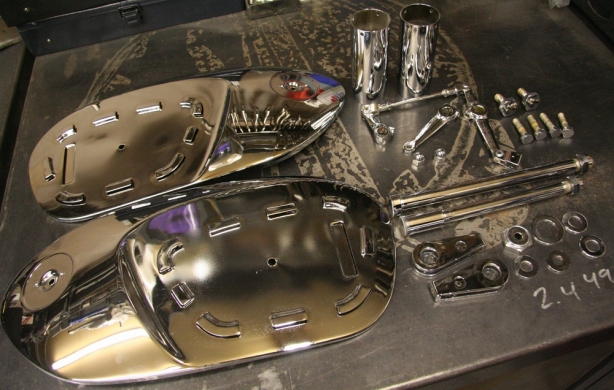
Here are the freshly chromed bike components. If you look at everything to the right of the tank covers you will see that there is not a lot of chrome on the bike, just enough to help blend the tank covers in with the whole package.
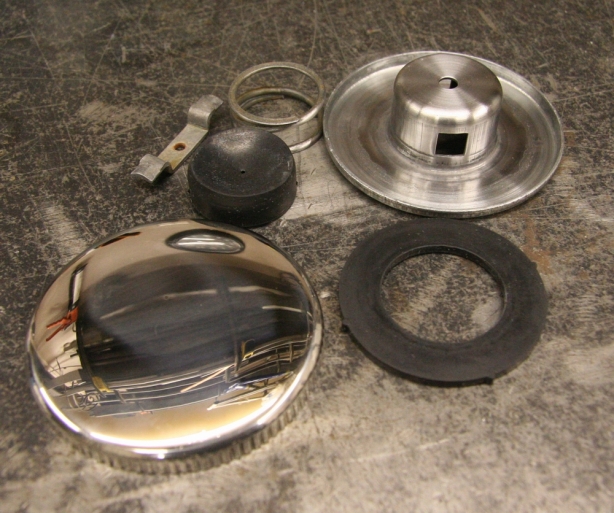
The tank cap is pressed together but I was able to “blow” it apart using compressed air. I then was able to clean all the old varnish and rust from the internal components. I was successful in pressing it all back together.
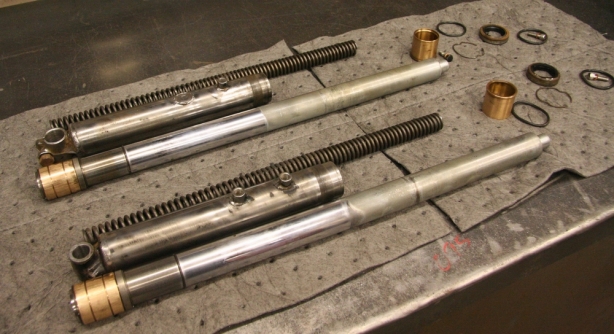
Something that had been weighing heavy on my mind was the front fork rebuild. I was unsure if they would come apart easily and I suspected I may have seal issues. Turned out getting them apart was a bit of a challenge. I needed to machine a tool in order to spin off the fork seal housings. Also trying to slide the rams out from the lower housing was not easy as they did not slide smoothly out the bores. More on this later.

The front fork lowers have 4 threaded spacers welded onto them, they all support the front fender however one is the nut that secures the front brake drum arm. This one was broken off at the welds. Needless to say the front brakes do not operate without the arm securing attached to the fork assembly. I used the original threaded spacer and TIG welded it back on.
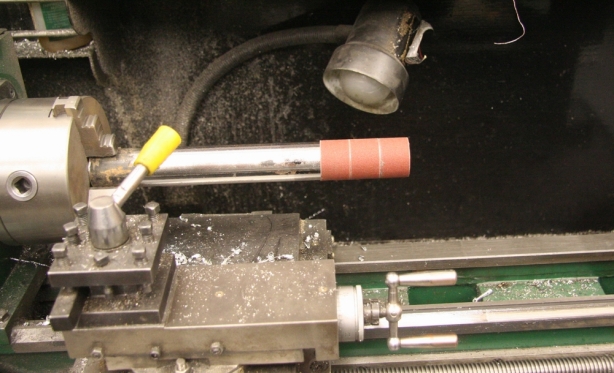
So here comes the story of why the forks had trouble coming apart. I knew that when I welded the spacer back onto the lower fork tube that the inner bore of the tube may distort. It turns out I was right and after TIG welding the spacer on the fork ram, and bushing, would not slide down into the housing. As I inspected a bit more closely it would appear that the factory welded spacers also distorted the tubes which is why I suspect the bushings were so hard to remove from the fork lowers. I am guessing that the factory must weld the nuts on after the rams are installed, this seems odd to me however I can not determine how they could have installed the rams into distorted fork lowers. I had to come up with a solution to help everything go together, and slide, smoothly. The fork lowers have a second tube in them to allow for spring support. This made for cleaning of the inside bore difficult. In the end I decided I would machine a pipe down enough to fit into the fork lowers. I then glued sandpaper onto the pipe to turn it into a hone.

Here you can see me honing the side of the fork lower which has the nuts welded onto them. I was able to take off just enough material on the inside of the fork to allow the ram to slide smoothly. Lucky for me these forks are 1965 technology and they do not possess, or require, the precision of modern engineering.
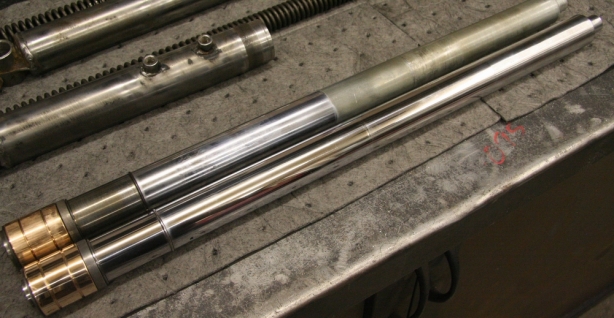
The fork rams received a good polishing to clean up some of the old wear and tear. The rams inspected to be in good order with no major nicks. The upper fork is original and the lower is one that has been cleaned up.
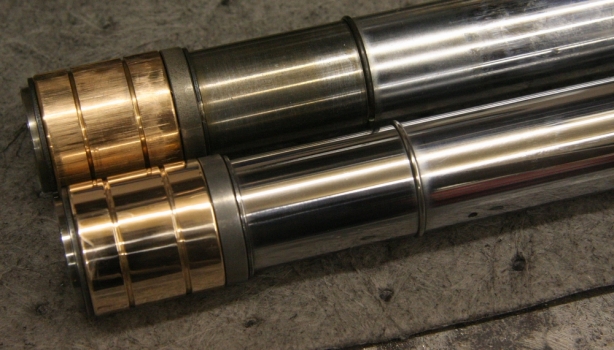
These are the bushings that need to slide smoothly into the fork housings. You can see the scoring on the upper bushing that was caused upon removal. I was able to clean up the scoring and give them a good polish before reassembly.

I have pretty much sourced every single part I needed for the CB160 project. I think I have only failed on 1 part and that is the fork seals. I was able to find a supplier however the logistics involved in actually performing the purchase transaction made it too difficult to obtain the seals. I opted for improvisation. The CB160 had 2 different fork seals. 1 for the early model (which is mine) and 1 for the later model. Turns out the later ones are still available from Honda. The difference between the 2 different years is the outer diameter of the seal. Lucky for me the inside diameters appear to be the same. The later models have a smaller OD which also turns out to work in my favor. So in order to adapt the later model smaller OD into my early model forks I opted to machine a press fit spacer as an adapter sleeve for the different seal. The top seal in this picture is the original. The bottom left is the newer seal with a smaller OD and the right is the completed spacer I machined to use as an adapter.
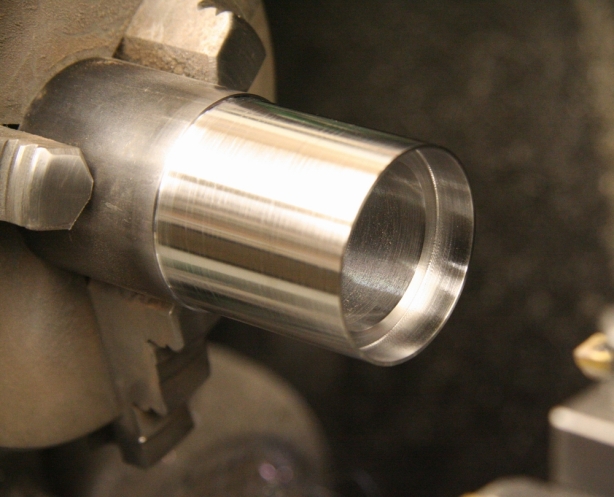
I used a 1.750″ seamless pipe with a .250 wall thickness to machine the adapter from. It was hard to measure down to the thousandth of an inch in order to accommodate a press fit.
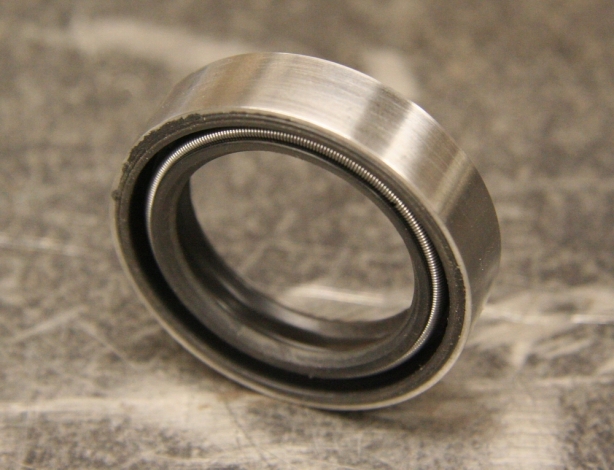
And here is what the seal looks like pressed into the bushing. I did not post pictures of the installed assembly into the fork tube however the press fit turned out great! Hopefully no oil leaks around the OD of the seal or bushing.
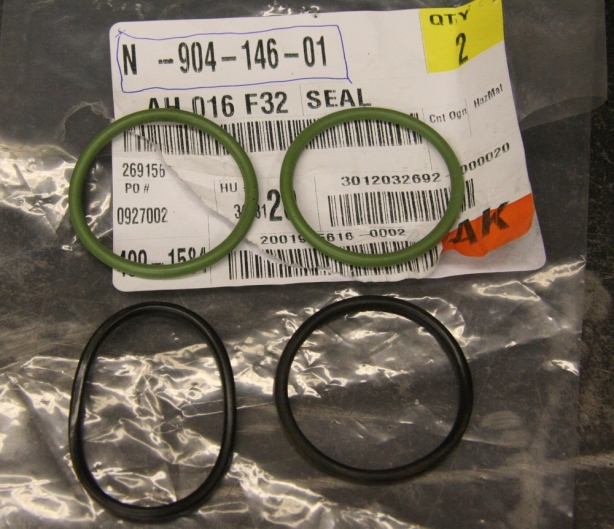
One other part I failed at obtaining was the O-rings required to seal the fork seal housing to the lower fork tube. They are a 38 x 2 mm o-ring and are no longer available. With some searching I found that VW uses the same size seal on multiple engine components including fuel pumps. I ordered a couple up from VW in hopes they would work. Turns out the fit was perfect. Problem solved.
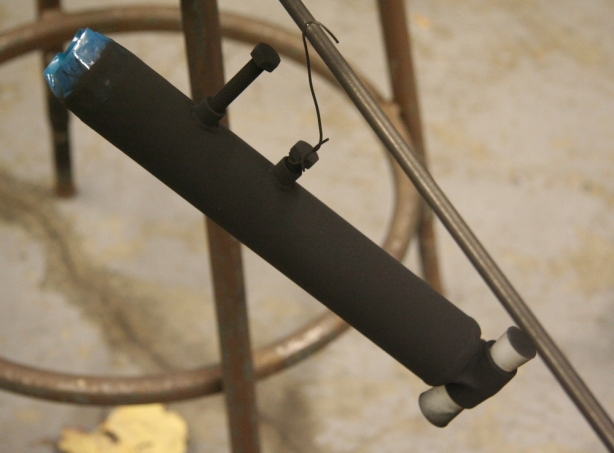
So with all of my fork issues behind me all that was left was to perform the finishing touches before reassembly. The fork lowers got sandblasted and powder coated matte black.

Here are all the refinished components. Seat housings chromed, rams polished, lowers powder coated, housing honed, and seals installed. All ready for reassembly.
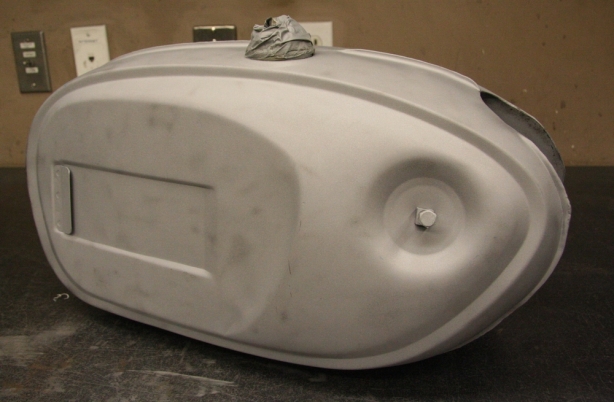
It is getting to the point where I need to get some main components refinished. I started by glass bead blasting the tank. The clean up turned out fantastic. It was stripped of all the old paint and rust and upon inspection it would appear the tank had no dents or damage. There will be very little body work required.
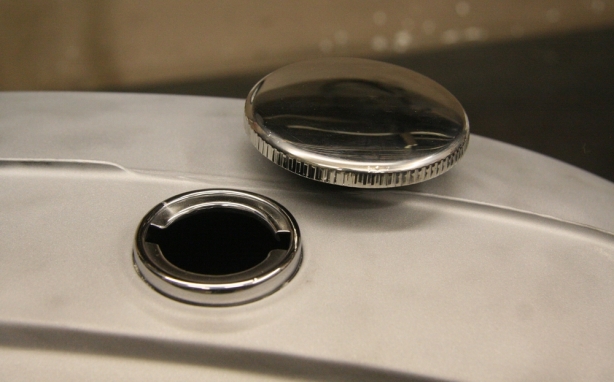
I thought that polishing the filler neck would give a more finished look plus it will tie in nicely with the polished fuel cap.
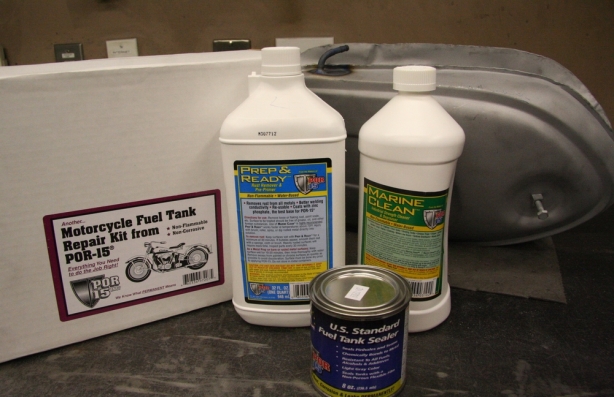
The tank had a lot of rust in it and was going to require some serious attention to get it all cleaned up. Earlier I had ordered a POR-15 fuel tank repair kit knowing I was going to have to attack my problems with chemicals. I used the kit however not exactly as the directions stated. Here was the sequence I used to achieve fantastic results;
1. Rinsed that tank with Marine Clean for 15 minutes
2. Rinsed the tank with CLR for 15 minutes.
3. Added approximately half a cup of glass beads and 2 cups distilled water and shook vigorously for 15 minutes.
4. Rinses and pressure wash the inside of the tank
5. Added another half cup of glass beads and halve a bottle of Prep and Ready and shook again for 15 minutes
6. Rinsed and pressure washed
7. Added straight Prep and Ready and soaked for half an hour while repositioning.
8. Rinsed and pressure washed.
9. Dried the tank for 4 days which included multiple sessions with a heat gun
10. Coated the tank with a sealer.
The whole process took time however the results were great. The tank cleaned up inside to bare metal and there were no leaks before, or after, the sealer.

